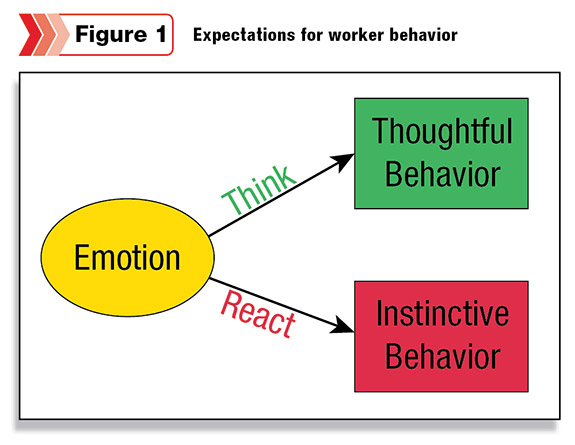It is also clear that the perceptions of consumers about the attributes of the meat they purchase are changing.
As our society has become more affluent, more and more consumers have been able to base their buying decisions on attributes other than price. One of these attributes – quality – has been very beneficial to beef producers.
As the above paragraph reflects, consumers make their buying decision based on their perceptions of the attributes of the products they purchase – beef, in our case.
As our society has become more affluent, the diversity of attributes consumers consider has increased. In recent decades, some of these new, more diverse attributes have included attributes not directly related to the products.
Most controversially, these new attributes have included how the products are produced. These changing attributes have not been limited to food. We have seen controversies over the location of production and the labor practices of the producers of the product.
In the beef sector, the most controversial attribute not directly about our beef has been animal treatment and practices used to handle the animals.
The consumer purchase decision is made based on the perception of those attributes important to that purchaser. In the case of price, perception and reality should be pretty close, as the price is posted.
For quality and other attributes of the food itself, perception and reality will likely not diverge greatly as the consumer is eating or using the product, thus providing information to correct misperceptions.
For attributes not directly related to the product itself, there is no clear mechanism for ensuring that perception is even close to reality. Therein lies the opportunity for individuals or groups opposed to a product, or a practice used in producing that product, to promote perceptions that reflect poorly on the product.
The goal of the individual or group in this situation is to reduce purchases of that product.
Before discussing what the producer should do in this difficult situation, we need to briefly discuss two realities that have been difficult for us in agriculture to accept:
1. We live in a consumer-driven world. The consumer – not the producer – ultimately decides what is produced. They do this by their buying decisions. This has not always been the case.
Henry Ford’s famous pronouncement about the Model T Ford – “any color you want, as long as it is black” – reflected a very different world.
One in which the producer was in control. The affluence and increasing communication after World War II spelled the end of the producer-driven economy.
2. Consumers will continue to include attributes not directly related to the product itself in their purchase decision. Consumers continue to show increased interest in how their food is produced. Beef and other animal products are among, if not at the top, of the list of products with most interest shown by consumers.
Given these two realities, the beef industry, like all other industries, must be customer-oriented. But what does that mean? We often hear that we should “listen to our customers.
”I would argue the statement should be “understand our customers” or more specifically “understand the attributes that are important in our customers’ buying decisions.”
Understanding customers comes from studying their purchasing behavior rather than asking them directly.
Just asking seldom provides much useful information because consumers seldom are able to articulate what attributes are important, much less the importance of each attribute. Instead, they usually provide the answer they think is desired.
What, then, should the beef industry and individual producers do to positively influence consumer perceptions about animal care? My answer includes:
- Determine which animal practices are adversely impacting today’s consumers’ perceptions of beef and then decide whether the benefits of each animal care practice to productivity and profitability are worth the negative impact on consumer perceptions.
- Provide research and information that assists consumers in moving their perceptions about animal care closer to the reality of your animal care intentions and practices.
- Strongly and swiftly condemn the actions of “bad actors” and bad actions. They are rare, but we do have producers whose practices are not consistent with proper care for their animals.
- Each ranch or farm must develop a culture in which there is zero tolerance for unacceptable animal practices.
We also have instances where improper animal care practices occur on ranches and farms that utilize proper animal care practices. We have a tendency in agriculture to be very passive in these situations.
Being passive or silent in these situations serves us badly. In these situations, industry leaders and individual ranch or farm leaders must step forward to condemn the actions, apologize for their occurrence and explain what steps will be taken to ensure there is no reoccurrence.
Let’s conclude our discussion by digging deeper into the last point. You are probably thinking zero tolerance for unacceptable animal practices sounds good – but how is it implemented?
Think about this. Every business has an explicit or implicit zero-tolerance policy for an employee slugging another employee. Do you think that means no employee has ever felt like slugging a fellow employee? Of course they have. So what stops them?
To answer that question, we need to understand more about emotions, like anger and the resulting behavior.
We as human beings experience emotions like anger. They are very personal, only partially controllable and cannot be dictated by an employer. We should not, and in fact cannot, tell our employees how to feel.

We can, however, have expectations about how employees behave. Look at Figure 1.
The experiencing of an emotion by anyone, ourselves or an employee, triggers a decision about how to respond (the resulting behavior).
A person can choose an instinctive behavior or take the time to think and choose the thoughtful behavior.
In our example of being angry enough to feel like slugging another employee, the societal and business culture pressures, and the potential resulting consequences, are sufficiently great to ensure that the employee will choose the thoughtful behavior and not slug their fellow employee.
Returning to our zero tolerance for unacceptable animal practices, the question becomes: How do we establish a beef production business culture that ensures employees choose the thoughtful animal practice even when he or she is angry?
The simple answer is: make the cultural pressures and consequences sufficiently great to ensure the thoughtful behavior.
Establishing a culture with zero tolerance for unacceptable animal practices is difficult, however, as it requires the following three ingredients:
- Every member of the workforce must have been trained in and mastered the appropriate animal practices. This training must include what the acceptable practices are, how they are used and why they are so important that there is a zero tolerance for unacceptable implementation.
- The beef production business has the welfare of the animals as an articulated, communicated and rewarded core value.
- The employees must be passionate about the success of the beef production business and committed to upholding its core values.
The reality that we live in a consumer-driven world, and that the animal practices we use enter into the buying decisions of some consumers, is not always easy to accept.
Denying those realities, however, will serve our industry badly. Instead, we need to accept these realities and focus on developing both production and animal practices and beef production business cultures that enable the industry to thrive in the turbulent times we live in.
Bob Milligan is also professor emeritus, Dyson School of Applied Economics and Management, Cornell University.
Senior Consultant
Dairy Strategies LLC










